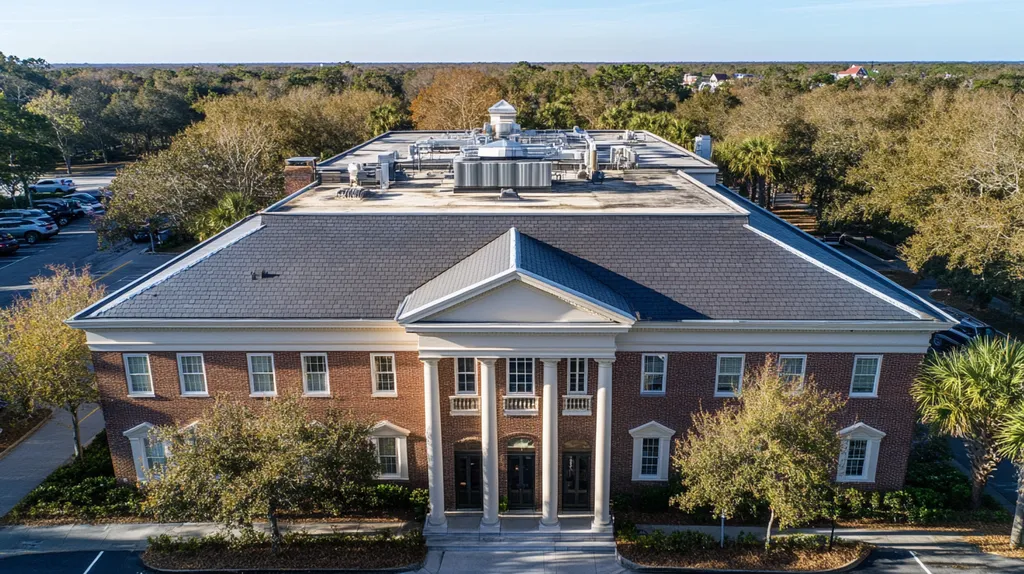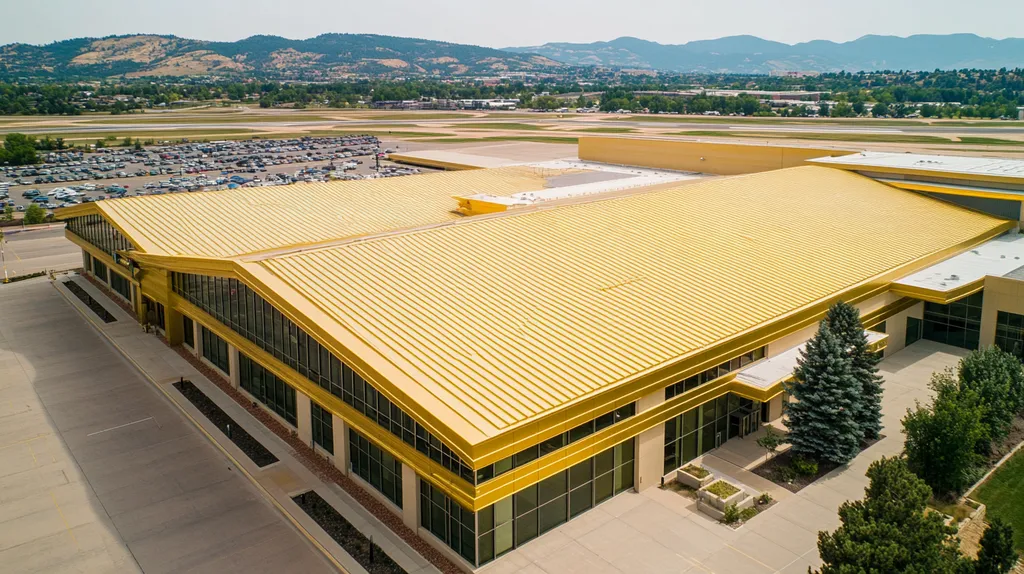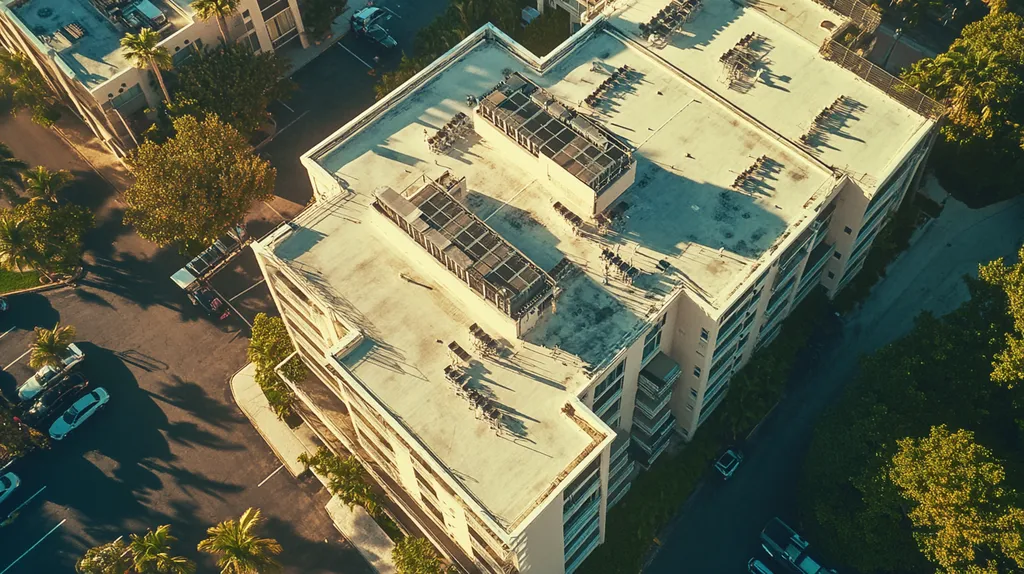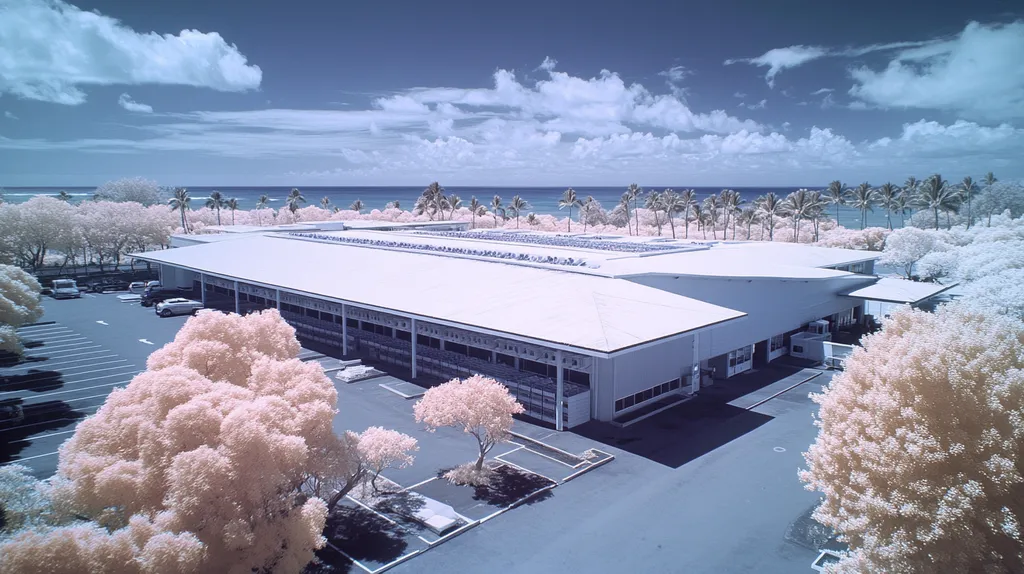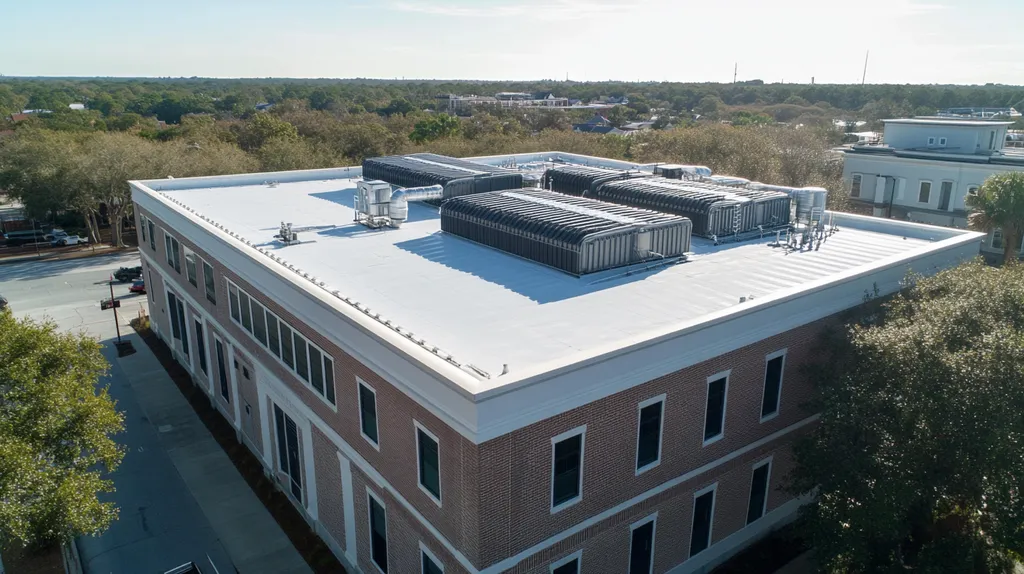Industrial roof installations represent multi-million dollar investments that directly impact business continuity and operational costs. Industry data shows that 47% of commercial roofs fail prematurely due to improper installation or material selection.
For facility managers and building owners, navigating the complexities of industrial roofing often leads to costly mistakes that compound over time. With installation costs ranging from $250,000 to over $1 million, understanding common misconceptions and evidence-based solutions becomes critical.
This comprehensive guide examines widespread myths about industrial roofing while providing practical, proven approaches for maximizing roof performance and protecting valuable assets.
SECTION 1: COMMON MISCONCEPTIONS
Industrial roofing decisions represent critical investment choices that directly impact business operations and facility protection. Poor roofing choices often lead to premature system failures, increased energy costs, and structural damage that can disrupt operations. With industrial roof installations typically ranging from $250,000 to over $1 million, misconceptions about materials and installation can result in costly mistakes that affect both immediate budgets and long-term facility management.
Myth: All Industrial Roofing Materials Perform Equally
The misconception that all industrial roofing materials deliver similar performance leads many facility managers to focus solely on initial costs. This oversimplified approach ignores crucial differences in material properties that affect long-term durability and performance.
TPO membranes, for instance, excel in heat reflection and energy efficiency but may require specific installation techniques. EPDM offers superior weather resistance and flexibility but demands careful seam installation to prevent leaks.
Material selection must account for facility-specific factors including local climate, roof traffic expectations, and equipment loads. A warehouse storing temperature-sensitive goods requires different roofing properties than a manufacturing facility with heavy HVAC equipment.
Understanding these distinctions helps prevent the costly mistake of installing inappropriate materials that fail to meet specific operational requirements.
Misunderstanding Flat Roof Durability and Leak Risks
Many building owners mistakenly believe that flat roofs inherently leak more than pitched roofs. This misconception stems from experiences with poorly installed or improperly maintained systems rather than inherent design flaws.
Modern flat roof systems incorporate sophisticated drainage designs and waterproofing technologies. When properly installed, these systems effectively channel water while maintaining structural integrity.
Regular maintenance remains crucial for maximizing your roof’s lifespan and preventing costly damage. Targeted repairs often suffice instead of full replacements when addressing early-stage issues. (source: Grizzly Roofing)
Professional installation by certified contractors significantly reduces the risk of water penetration and extends system longevity.
False Assumptions About Metal Roof Noise and Maintenance
The perception that metal roofs create excessive noise during rain or require constant maintenance prevents many facility managers from considering this durable option. Modern metal roofing systems incorporate insulation and dampening materials that effectively minimize weather-related noise.
Contemporary metal roofing systems feature advanced coating technologies that resist corrosion and maintain appearance. These protective layers significantly reduce maintenance requirements while extending service life.
Initial installation costs for metal roofs typically exceed traditional materials, but their extended lifespan and reduced maintenance needs often result in lower total ownership costs.
Understanding these advantages allows facility managers to make informed decisions based on long-term value rather than common misconceptions.
SECTION 2: PRACTICAL IMPLICATIONS
Industrial roof installations represent critical infrastructure investments where mistakes can cascade into catastrophic failures. Research indicates that up to 40% of all commercial roof failures stem from installation errors or material mismatches. When a roof system fails prematurely, the combined costs of repairs, business interruption, and potential equipment damage can exceed millions of dollars. Understanding these practical implications helps facility managers make informed decisions that protect their investments.
Impact of Poor Installation on Roof Longevity
Industrial roofs typically carry 20-30 year warranties, but improper installation can reduce their functional lifespan to less than five years. Common installation errors include inadequate membrane attachment, improper flashing techniques, and insufficient substrate preparation.
These installation deficiencies often manifest as leaks, membrane separations, and structural degradation. What begins as a minor defect can quickly escalate into system-wide failure requiring complete replacement.
The financial impact extends beyond repair costs. Business disruptions from emergency repairs, damaged inventory, and compromised working conditions can exceed the original roofing investment.
Professional installation by certified contractors using proper techniques and quality control measures remains the most effective way to ensure maximum roof longevity.
Consequences of Ignoring Proper Drainage Systems
Water pooling represents one of the most destructive forces affecting industrial roofs. Just one inch of standing water adds 5.2 pounds of weight per square foot, potentially overwhelming structural design limits.
Inadequate drainage leads to membrane deterioration, seam failures, and eventually interior leaks. These issues compound over time as water infiltration accelerates material breakdown and promotes mold growth.
Proper drainage design must account for local rainfall patterns, roof geometry, and equipment placement. Even minor obstructions in drainage paths can create damaging ponding conditions.
Regular maintenance of drains, scuppers, and downspouts helps prevent catastrophic failures. However, no amount of maintenance can compensate for fundamentally flawed drainage design.
Effects of Using Incorrect Materials for Climate Conditions
Different climates demand specific roofing materials and installation methods to ensure optimal performance. Solar exposure, temperature extremes, and precipitation patterns all influence material selection and system design.
Commercial roofs must be tailored to local environmental demands, considering factors like UV radiation, freeze-thaw cycles, and wind exposure. The wrong material choice can lead to premature aging, increased maintenance costs, and system failure. (source: Kingdom Roofing Inc.)
Energy efficiency also plays a crucial role in material selection. Reflective surfaces might benefit warm climates but provide little advantage in cooler regions where heat retention becomes more important.
Climate-appropriate materials combined with proper installation techniques create resilient roofing systems that maintain their integrity throughout their expected service life.
SECTION 3: COST OF MISINFORMATION
Misconceptions about industrial roofing lead to staggering financial losses across the commercial sector. Industry data shows that improper roof management decisions cost facility owners over $3 billion annually in preventable damages and repairs. Beyond the immediate repair costs, these misguided choices trigger a domino effect of increased energy consumption, accelerated deterioration, and operational disruptions that can cripple a business’s bottom line.
Financial Risks of Delayed Roof Repairs
When minor roof issues go unaddressed, repair costs typically escalate at an exponential rate. What begins as a $500 repair can balloon into a $50,000 emergency replacement within months if water infiltration compromises underlying insulation and deck materials.
Water damage from delayed repairs extends far beyond the roof itself. Compromised inventory, damaged equipment, and interrupted operations often cost ten times more than the original repair would have required.
Recovering your commercial roof with new materials while leaving existing damage underneath creates a ticking time bomb of future expenses. Proper removal of old materials and repair of hidden damage is essential for long-term performance.
The misguided practice of layering new materials over deteriorating substrates ultimately leads to premature system failure and complete replacement far ahead of schedule. (source: Hoyt Exteriors)
Increased Energy Expenses from Inefficient Roofs
Compromised roofing systems dramatically impact facility energy costs through decreased insulation values and reduced reflectivity. Even minor membrane degradation can increase monthly cooling costs by 15-25% in warm climates.
Wet insulation loses up to 75% of its thermal resistance capability. A single roof leak can saturate vast sections of insulation, creating a thermal bridge that bleeds energy year-round.
The compounding effect of rising energy costs makes inefficient roofs increasingly expensive to maintain. What starts as a slight uptick in utility bills often snowballs into major budget impacts within 2-3 years.
Modern high-performance roofing systems with proper installation and maintenance typically pay for themselves through energy savings within 5-7 years.
Hidden Costs of Frequent Roof Replacements and Patching
The true cost of repeated repairs extends far beyond contractor invoices. Emergency repairs often require premium pricing for fast response, while weather delays and material shortages can stretch minor projects into major disruptions.
Each repair cycle introduces new potential failure points as different materials and methods interact. These compatibility issues frequently trigger premature deterioration in adjacent areas.
Business disruption from repair activities carries substantial indirect costs. Employee productivity drops, customer access may be limited, and sensitive operations often require temporary relocation during work.
The administrative burden of managing frequent repairs diverts facility personnel from core responsibilities. Time spent coordinating contractors, processing invoices, and documenting repairs represents a significant hidden cost.
Quality installation with proper materials and techniques typically costs 15-20% more upfront but eliminates most emergency repairs for 15-20 years.
SECTION 4: REALITY CHECK
Industrial roofing represents a critical infrastructure investment where precision matters. Studies show that 40% of commercial roof failures stem from inadequate customization and poor installation practices. With replacement costs often exceeding $500,000 for typical industrial facilities, the stakes couldn’t be higher for building owners seeking reliable, long-term roofing solutions.
Importance of Customized Roofing Solutions
Every industrial facility presents unique challenges that demand specifically engineered roofing solutions. Factors like equipment loads, chemical exposure, and ventilation requirements fundamentally shape system design and material selection.
Local climate conditions play a crucial role in determining appropriate materials and installation methods. A roof system perfect for an Arizona warehouse could fail catastrophically when installed on a Minnesota manufacturing plant.
Traffic patterns and maintenance requirements must influence design decisions. Facilities with frequent roof access for equipment service need enhanced durability and wear resistance in high-traffic zones.
Energy efficiency goals require careful balance with durability needs. While reflective membranes reduce cooling costs, they must be paired with appropriate insulation and vapor barriers to prevent condensation issues.
Benefits of Precision Fabrication and Seam Reduction
A properly installed and maintained flat roof can deliver exceptional performance when fabricated with precision. Quality materials combined with expert installation and minimal seams create systems that reliably protect facilities for decades. (source: The Duerson Corporation)
Field seams represent the most vulnerable points in any roofing system. Modern fabrication techniques that reduce seam quantity while improving joint quality dramatically decrease leak potential.
Factory-controlled conditions enable superior quality control compared to field fabrication. Precise cutting and joining of materials under optimal conditions produces consistently reliable results.
Advanced membrane welding technology creates molecular bonds stronger than the base material. These superior seams maintain watertight integrity even under extreme weather conditions.
Role of Professional Installation in Roof Performance
Expert installation represents the critical link between quality materials and long-term performance. Even premium roofing systems fail prematurely when installed by inexperienced crews lacking proper training.
Proper substrate preparation and material handling determine initial system integrity. Rushing these foundational steps to save time inevitably leads to premature failures and costly repairs.
Detail work around penetrations, transitions, and terminations demands specialized knowledge. These critical areas require careful attention to manufacturer specifications and industry best practices.
Quality control throughout installation ensures consistent results. Regular inspections, testing of seams, and documentation of procedures protect both installers and building owners.
Professional crews understand the importance of proper drainage design and implementation. Their expertise prevents ponding water issues that can void warranties and accelerate deterioration.
SECTION 5: EVIDENCE-BASED ALTERNATIVES
Industrial roofing decisions carry multi-million dollar implications for facility operations and asset protection. Studies show that selecting appropriate materials and maintenance strategies can extend roof lifespans by 40% while reducing energy costs by up to 30%. Yet many facilities continue struggling with premature failures and excessive operating costs due to outdated approaches and misaligned solutions.
Selecting Durable, Climate-Appropriate Roofing Materials
Material selection represents the foundation of long-term roofing performance. Different geographic regions and facility types demand specific material properties to ensure optimal protection and durability.
A properly installed and maintained flat roof can deliver exceptional performance when fabricated with precision. Quality materials combined with expert installation and minimal seams create systems that reliably protect facilities for decades. (source: The Duerson Corporation)
Northern facilities require materials resistant to freeze-thaw cycles and heavy snow loads. Modified bitumen and EPDM systems excel in these demanding environments while providing superior flexibility during temperature swings.
Southern installations benefit from thermoplastic membranes with high solar reflectivity. These materials can reduce peak roof temperatures by up to 50°F while maintaining structural integrity under intense UV exposure.
Implementing Preventative Maintenance Programs
Structured maintenance programs dramatically reduce life-cycle costs while extending system performance. Data shows that every dollar invested in preventative maintenance saves four dollars in emergency repairs and premature replacement.
Quarterly inspections should examine membrane condition, seam integrity, and drainage performance. These evaluations help identify developing issues before they compromise the roofing system.
Maintaining detailed inspection and repair records creates accountability while tracking system performance. This documentation proves invaluable for warranty claims and planning future replacements.
Professional maintenance crews can often restore aging systems through targeted repairs and protective coatings. These interventions cost fraction of replacement while adding years of serviceable life.
Utilizing Energy-Efficient and Reflective Roofing Technologies
Modern roofing technologies deliver substantial energy savings through enhanced thermal performance. Cool roof systems can reduce peak cooling demands by 15-25% in warm climates through increased solar reflectivity.
Vegetative roof systems provide natural insulation while managing stormwater runoff. These installations can reduce heating and cooling costs by up to 25% while extending membrane life through UV protection.
Advanced insulation materials and installation methods eliminate thermal bridging that wastes energy. Proper insulation placement and protection maintains R-value performance throughout the roof’s service life.
Energy-efficient roofing often qualifies for utility incentives and tax benefits that offset initial costs. These financial advantages combine with operational savings to deliver compelling returns on investment.
SECTION 6: TEST AND VERIFY
Industrial roof installations demand rigorous testing and verification to prevent catastrophic failures. Studies show that undetected installation issues account for over 47% of premature roof failures within the first five years. With replacement costs often exceeding $500,000 for typical industrial facilities, systematic verification through advanced monitoring, professional inspections, and certified installations provides essential protection for this critical investment.
Employing Intelligent Leak Detection and Monitoring Systems
Modern electronic leak detection systems utilize advanced sensor networks to identify water infiltration before visible damage occurs. These systems can pinpoint moisture penetration within inches, enabling precise repairs that minimize disruption and cost.
Continuous monitoring through integrated moisture sensors provides real-time alerts when water breaches the roofing membrane. This early warning capability typically reduces repair costs by 60-80% compared to waiting for visible signs of leakage.
Advanced systems now incorporate predictive analytics that identify developing problems based on subtle changes in membrane performance. This forecasting ability helps facility managers schedule preventive maintenance during planned downtimes.
The investment in electronic monitoring typically pays for itself within 2-3 years through reduced emergency repairs and extended roof life. Implementation costs continue dropping as sensor technology improves.
Conducting Regular Roof Inspections and Integrity Testing
Professional roof inspections combine visual assessment with advanced testing methods to evaluate system integrity. Core sampling, infrared scanning, and electronic leak detection provide comprehensive data about membrane condition and underlying components.
Bi-annual inspections represent the minimum frequency for maintaining warranty coverage and identifying developing issues. More frequent evaluations may be warranted in harsh environments or on roofs with critical equipment.
Documentation through detailed inspection reports, photographs, and test results creates an essential performance record. This history helps track degradation patterns and optimize maintenance scheduling.
Proper metal roof installations incorporate specialized testing to verify watertight seams and proper attachment. Metal systems require correct sealing and regular maintenance checks to prevent corrosion and ensure long-term performance. (source: Berwald Roofing)
Validating Installation Quality Through Manufacturer Certifications
Manufacturer certification programs establish minimum standards for contractor training, installation procedures, and quality control. These programs typically require extensive hands-on experience and demonstrated proficiency with specific materials.
Certified contractors must maintain current training on evolving installation techniques and system components. This ongoing education ensures familiarity with the latest materials and best practices.
Quality assurance inspections by manufacturer representatives verify proper installation procedures and material usage. These third-party evaluations provide crucial verification of workmanship quality.
Certification requirements often include proper insurance coverage and financial stability checks. These business qualifications help protect facility owners from contractor default or warranty disputes.
Maintaining certification requires contractors to meet specific volume requirements while maintaining acceptable quality ratings. This performance tracking helps identify consistently reliable installers.
The Bottom Line
With industrial roof failures costing businesses over $3 billion annually in preventable damage, the stakes for proper installation couldn’t be higher.
Industry data shows that 47% of premature roof failures occur within the first five years due to improper installation or material selection, while proper installation can extend roof life by 40% and reduce energy costs by up to 30%.
Success requires moving beyond common misconceptions to embrace evidence-based solutions: climate-appropriate materials, professional installation, systematic maintenance, and advanced monitoring systems.
For facility managers and building owners, the choice is clear: invest in quality installation upfront or risk catastrophic failures that can exceed $500,000 in replacement costs while threatening business continuity.
FREQUENTLY ASKED QUESTIONS
Q. Do all industrial roofing materials perform equally?
A. No, each material has unique properties that affect durability and performance. Factors such as local climate and intended use must guide material selection to ensure proper function and longevity.
Q. How does improper installation affect an industrial roof?
A. Improper installation can significantly reduce the roof’s expected lifespan, leading to leaks and damages. Common errors like inadequate membrane attachment can escalate maintenance costs and disrupt business operations.
Q. What are the financial risks of delaying roof repairs?
A. Delayed repairs can turn minor issues into major expenses, costing much more in the long run. Ignoring small leaks can lead to extensive damages, increasing repair costs and risking business operations.
Q. Why are customized roofing solutions important?
A. Customized solutions address unique challenges like load requirements and environmental conditions. Tailoring your roofing system ensures better performance and reduces the risk of premature failures.
Q. How can preventative maintenance impact roofing costs?
A. Regular maintenance programs significantly lower overall roofing costs by extending lifespan and preventing major repairs. Investing in preventative measures can yield significant savings compared to emergency fixes.
Q. What role does verification play in roof performance?
A. Verification ensures quality installation and identifies potential issues early. Implementing monitoring systems and regular inspections can prevent costly failures and maintain roof integrity.
Q. How often should industrial roofs be inspected?
A. Roofs should be inspected at least bi-annually, or more frequently in harsh environments. Regular inspections help identify and resolve issues before they cause significant damage or costly repairs.

